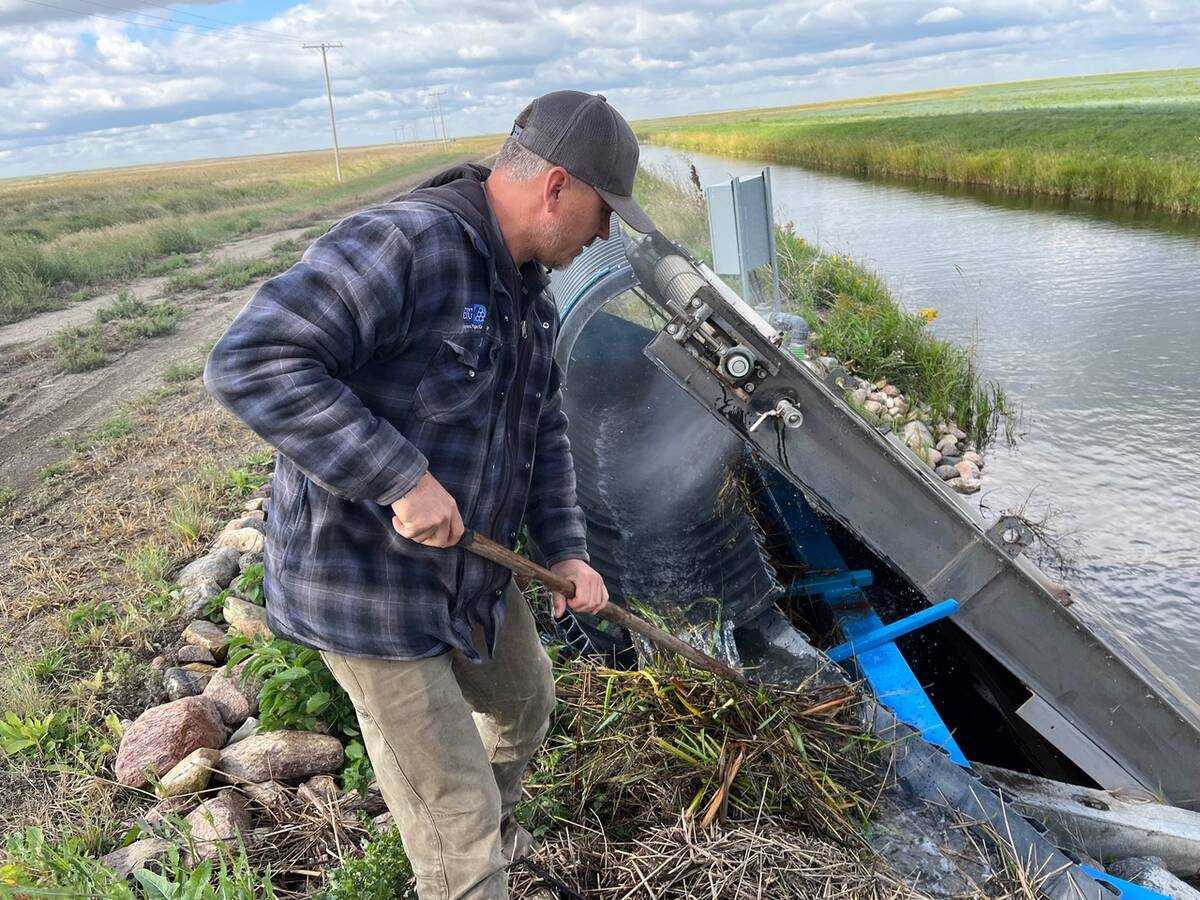The Canadian government could approve meat irradiation early next year.
But the process of zapping foods with radiation to kill contaminants wouldn’t necessarily have prevented the listeria outbreak that is linked, as of last week, to 15 deaths, eight confirmed and seven under investigation. The fatalities occurred in Saskatchewan, British Columbia, Ontario and Quebec. There are also suspected cases in Manitoba and Alberta.
Amid the meat product recalls, questions have been raised about the role of federal inspectors and what could be done to prevent future problems.
Read Also

Saskatchewan farmer uses tile drainage to manage water
The integration of both irrigation and tile drainage results in higher yields, water efficiency, improved soils and less nutrient runoff, says one producer.
Dr. Jeff Farber, director of Health Canada’s bureau of microbial hazards, said irradiation is one tool that could be used to control food-borne pathogens or extend shelf life.
The products going through the regulatory process to allow irradiation include ground beef, poultry, shrimp and prawns, and mangoes.
“We will be moving ahead with those in the new year, to try to get approval for the use of irradiation in meats,” Farber said during a conference call with reporters.
The list doesn’t include some of the ingredients typically included in ready-to-eat meats.
“We have no submission in for the use of irradiation on heated meats,” Farber said.
He said irradiation is best used on raw meat such as ground beef to kill E. coli.
Brad Wildeman, president of the Canadian Cattlemen’s Association, said that’s a good idea in light of consumers’ increasing concern about food safety.
“The single most effective intervention that could be done is irradiation.”
He said the application to approve irradiation of ground beef was submitted 10 years ago and should have been approved long ago.
“It’s proven safe,” Wildeman said.
The Canadian Food Inspection Agency says subjecting foods to radiation is safe because the foods are not heated significantly and don’t store the radioactivity. Officials regulate the amount of radiation foods can absorb and all irradiated foods must be clearly identified.
The United States already allows irradiation of some meat and spices and recently announced that fresh spinach and iceberg lettuce would be irradiated to kill E. coli, salmonella, listeria and other bacteria. That move came after an E. coli outbreak in spinach in 2006 killed three Americans and made 200 ill.
In Canada, producers can irradiate potatoes and onions to prevent sprouting; wheat, flour and whole wheat flour to control insects during storage; and spices and seasonings to destroy microbial loads. The technology, however, is not widely used.
“Practically, it’s the irradiated spices that are on the market that are being irradiated,” Farber said.
There are other ways to manage food safety.
Agriculture minister Gerry Ritz has repeatedly pointed to the additional resources for the CFIA, including more inspectors. He defended the federal inspection system, saying about half of an inspector’s time is spent working on a plant floor and half overseeing paperwork such as test results and company procedures.
He also said processors can implement safety measures.
“There is a role – the U.S. have it available, we have it available here too – if a processing facility wants to use it, called pasteurization,” Ritz said. “There’s still some scientific discussions going on whether or not that’s 100 percent effective.”
As part of its listeria control measures, the U.S. requires processors to use one or a combination of three alternatives: pasteurize or boil their products in the packages to kill the bacteria; add chemicals to kill the bacteria; and, provide greater sanitary controls.
Farber said when people call for something like irradiation to be used, they must remember that other practices come into play.
“Don’t forget, you don’t want to use irradiation to treat bad food,” he said. “You know, you’ve got to use it sensibly in combination with good manufacturing practices, in combination with the HACCP (Hazard Analysis Critical Control Points) principles.”
Maple Leaf has said its practices go above and beyond government regulations. As a plant approved to export to the U.S., it has to meet the U.S. requirements.
The plant remained closed as of Aug. 29. When it does reopen, all products will be held and tested through a six-week period to make sure listeria is not present, Ritz said.
The company has taken full responsibility for the outbreak, saying federal inspection procedures were not to blame.
Maple Leaf’s share prices closed at $8.75 Aug. 29, after trading around $11 before the outbreak and hitting a 52-week low of $7.60 Aug. 27.
Asked about the future of Maple Leaf and its large facility in Brandon in particular, Ritz said he was confident the company would pull through.
“We are concerned, as producers are, but I think at the end of the day the Maple Leaf brand will continue and be strong,” he said.
The outbreak shut down Maple Leaf Foods’ Toronto meat processing plant and resulted in the recall of more than 200 types of products made there.
Also pulled were ready-made sandwiches distributed by retailers and deli meats used in restaurants, hospitals and other institutions.

















